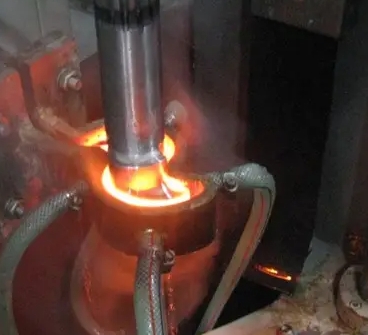- 25
- Apr
Process of inner surface of round hole during high frequency quenching
Process of inner surface of round hole during high frequency quenching
1. The use of single-turn or multi-turn inner surface heating inductors can conduct induction heating surface high-frequency quenching on the inner surface of the round hole.
2. U-shaped inductors made of copper tubes can be used for inner hole induction heating. A magnetic conductor is installed in the middle of the inductor, which can change the distribution state of the magnetic field lines and flow the high-frequency current from the inside to the outside, which improves the efficiency of the inductor.
3. The inner surface of the small hole can be high-frequency quenched by winding copper wire into a circular inductor. For example, for an inner hole with a diameter of 20mm and a thickness of 8mm, the induction coil is made of copper wire with a diameter of 2mm and wound into a spiral shape. Both the sensor and the workpiece are immersed in clean water flowing in the sink.
4. When the high-frequency current passes through the inductor, an alternating magnetic field is generated around it, so that the workpiece generates an induced current, and the inner hole of the workpiece is heated. When the surface of the workpiece rises to a certain temperature, the surrounding water is vaporized into a layer. The stable steam film isolates the workpiece from water, and the surface temperature of the workpiece rises rapidly to the heating temperature of high-frequency quenching. Once the power is cut off, the steam film on the surface of the workpiece disappears, thereby rapidly cooling. During this process, the sensor is always immersed in water without overheating.

